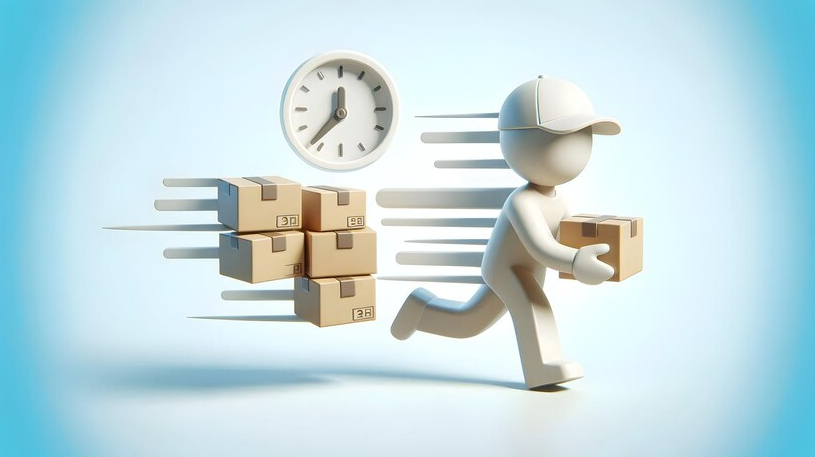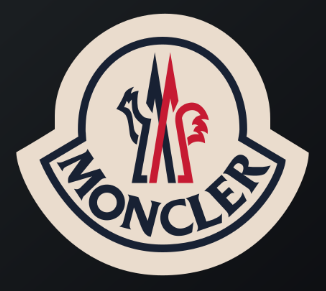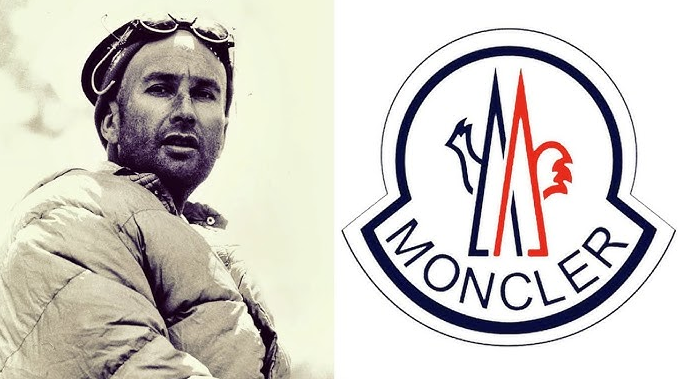How to increase the number of paid carts in your online store: 14 effective ways!
-
Zinaida Rumyantseva
Copywriter Elbuz
Is your online store losing customers right at the door? Have you tried to take the first step towards their hearts? Today you will find 14 proven ways to increase the number of paid carts...

Glossary
📱 Usability website - The ability of the site to be convenient and understandable for users, which makes it easier to place orders.
💳 Payment options - Various methods and systems , which customers can use to pay for goods and services in an online store (for example, credit cards, e-wallets, mobile payments).
✍️ Simplified registration - Minimization of information that the user must enter to create an account, or the ability to make purchases without registration.
📢 Catch-up advertising (retargeting) - Online - advertising that “catch up” with users after visiting the site to remind them of abandoned carts or previously viewed products.
💰 Pricing policy - Strategy for pricing goods and services, including discounts, promotions and special offers, aimed at increasing purchasing activity.
🤝 Work with personnel - Training and motivation employees to improve the level of service and assist in placing orders.
🚚 Delivery Issues - Unexpected or excessive delivery costs, inconvenient options for time and place of delivery, which can scare away the buyer.
📧 Newsletter - Using email for information customers about new products, promotions and special offers.
🏆 Product Quality - Maintaining high quality of products offered products and services to satisfy customers and reduce the number of returns.
💬 Widgets and popups - Additional elements on website that provides the user with important information or offers to encourage purchases.
📲 Website adaptation for mobile devices - Optimization interface and functionality of the site for correct and convenient operation on smartphones and tablets.
🔄 Automated funnels - Automated marketing strategies that guide the user through a chain of actions from the first visit to the final purchase.
🌐 Website optimization - Measures to improve speed site loading, content structure and functionality to enhance the overall user experience.
☎️ Technical support optimization - Improved support service to quickly and effectively solve customer problems with maximum convenience for them.
Method number 1: Use a simple and convenient checkout process
I can confidently say that one of the key strategies for increasing the number of paid carts is to simplify and improve the experience of the checkout process. If a customer doesn't know where to click to complete the transaction, they are likely to leave your site, which can lead to significant losses. Let me tell you how I successfully implemented simple checkout in my projects and saw higher conversions.

Case Study
When I was working with an online clothing store, we noticed that our checkout conversion rate was below the industry average. I convinced the team to conduct an audit of the ordering process and discovered many bottlenecks: redundant fields to fill out, confusing buttons and a lack of clear guidance for the buyer. We have adopted the three-click rule, which states that any action on the site should be performed in no more than three clicks.
Basic steps
🚚 Selecting a shipping method
First step , which we have implemented is the choice of delivery method. I advised making it so that the client could choose among several delivery options with just one click. Remember about “abandoned carts” and how important it is not to complicate the customer’s path to completing the order.
💳 Selecting a payment method
The next step is choosing a payment method. We have simplified the interface by removing all unnecessary fields and leaving only the most necessary ones. For example, we offered clients several types of payment at once, displayed with separate buttons.
✅ Payment for order
The third and final step is payment. It is important that the client understands what actions he needs to take to complete the purchase. We made large and clearly visible buttons to confirm payment and added tips for each step to make it easier for the client to navigate.
.gif)
Results
After implementing these changes, we saw a significant increase in paid orders. A convenient and clear interface has become the key to customer trust and increased our conversion rate by almost 20%.
Final recommendations
What's useful:
- Follow the three-click rule.
- Reduce the number of fields to fill out.
- Make the interface as clear and intuitive as possible.
Things to Avoid:
- Redundant and unnecessary fields.
- Incomprehensible and small buttons.
- Complicated and confusing ordering steps.
By implementing these changes, I am confident that you will be able to significantly improve the convenience and ease of your online ordering process. store, which will undoubtedly lead to a decrease in abandoned carts and an increase in the number of paid orders.
Method #2: Use a variety of payment options
When I started my journey in the world of e-commerce, one of the key points that I paid attention to was the payment process. I can confidently say that offering customers a variety of payment options is not just desirable - it is a necessity.

Operational Security
I have repeatedly encountered a situation where buyers left the site at the payment stage, especially if they were offered to pay for the goods by transfer from card to card. It is clear that some clients will drop out at this stage, because payment security is one of the key points that users pay attention to. Therefore, I strongly recommend that all transactions take place using secure protocols that prevent data leakage.
Electronic payment systems such as PayPal and Apple Pay have proven themselves to be reliable and secure payment methods. I've also included the option to pay by card through trusted payment gateways like Stripe and Adyen. This not only increases customer confidence, but also minimizes the risk of returns and disputed transactions.
Ease of payment
The variety of available payment methods also increases the likelihood of completing a purchase. I personally choose a wide range of payment methods, such as:
- 💳 Payment by bank cards
- 💵 Cash to courier
- 💻 Electronic money (PAYEER, QIWI)
- 🏦 Bank transfer
Corporate and legal clients
Don't forget about corporate clients. In my experience, such clients often prefer to pay their bills via bank transfers. I offered them the opportunity to issue an invoice and pay by details, which greatly simplified the process and strengthened the business relationship.

Examples in real practice
On one of my projects, we decided to test a new payment system that supported multi-currency accounts and automatically converted currencies at the current rate. This helped us attract international clients and increase conversion by 12%. Customers highly appreciated the ease of use of this system.
Implementation Tips
I would suggest a few steps to implement these recommendations:
- Market research: Find out what payment methods your customers prefer to use.
- Connect trusted platforms: Make sure you are using trusted and secure payment systems.
- Analyze the results: Constantly monitor the conversion and level of customer trust in various payment methods.
"The more payment methods, the better. Ideally, you use all the known ones." - Jack Ma.
Table: Useful practices and errors
| Useful practices | Errors things to avoid |
|---|---|
| Using trusted payment systems | Limiting payment methods to bank transfer only |
| Ensuring security transactions | Using unencrypted protocols |
| Providing information about methods payment on the main page | Lack of information about security and data protection |
I am confident that following these recommendations will help you increase the number of paid orders and improve conversion in your online store.
Method #3: Simplify the registration process or skip it altogether
In my practice of managing online stores, I have repeatedly encountered the fact that mandatory registration turned out to be a serious obstacle to completing a purchase. I can say with confidence that many clients, when faced with a registration requirement, immediately leave the site. The reasons are very simple: people are afraid of spam by email or fear for the safety of their personal data.

To reduce the number of such departures, I would recommend implementing a simplified registration option. This is how I did it in one of my projects, and the results were immediate. Instead of the traditional form, which requires you to indicate your first name, last name, phone number, address and even go through a captcha, we left only one field - email address. This significantly reduced the time required to fill out the form and increased the number of paid orders.
Here are the specific steps I took to simplify the registration process:
- 🤗 Minimum data: We have removed all unnecessary fields, leaving only the required field for the email address.
- ✉️ Optional filling: Registration has been supplemented with the ability to fill in additional data at the ordering stage, and not immediately.
- 🚫 Refusal of captcha: Captcha has been excluded so as not to create unnecessary barriers.
These improvements resulted in a 20% increase in conversion rates. This proves that simplifying the registration process has a direct impact on the number of completed purchases.
So, I highly recommend considering waiving the registration requirement or simplifying the process for your online store. This will improve the user experience and increase customer confidence.
Implementation tips:
- 🖥️ Testing: Test the new registration option on a group of users to ensure its effectiveness.
- ✏️ Analysis and improvements: Collect feedback and make changes if something doesn't work.
- 📊 Monitoring: Track statistics on the number of completed registrations and paid carts.

🟢 Useful practice:
- Minimum number of required fields.
- Possibility of registration at the ordering stage.
🔴 Not recommended:
- Forcing clients to go through captcha
- Require a telephone number.
Now, I think it's worth turning to other ways to improve your online store. One of them is payment options , which you can read in more detail here.
Special point No. 4: Using remarketing and retargeting to increase sales
In my practice, I have more than once encountered a situation where customers added items to the cart, but never completed the purchase. Most often, this happened because they forgot which site they made their selection on, or simply did not take the time to go back and place the order. The solution to this problem was remarketing and retargeting tools, which I successfully used in my practice.

How I did it:
🔔 Setting up remarketing: I am sure that setting up remarketing correctly is the key to success. I used contextual ads through Google AdWords. This platform allowed me to show the desired product to precisely those users who had already shown interest in my store. This strategy worked especially well for ad units on social networks, where it was possible to target a narrow audience based on user behavior data.
🔔 Targeted advertising: If we talk about social networks, I actively used ad units on platforms such as Facebook and Instagram. These ads reminded users of forgotten items in their cart and encouraged them to complete their purchase. Using bright and attractive product images helped to attract the attention of potential buyers.
My approach to implementing such tools:
💡 Analysis and optimization: I always start with a deep analysis of user behavior on the site. It is important to determine at what stages they refuse to complete the purchase. The collected data helped me better set up advertising campaigns and make them more targeted.
💡 Testing and Adapting: I highly recommend regularly testing different approaches and adapting them based on the results. For example, ad formats, texts, images and target audiences changed. This approach made it possible to find the most effective combinations for each product category.
💡 Audience segmentation: I have always divided the audience into several segments depending on their behavior on the site. For example, some ads were shown to users who simply visited the site but did not purchase anything, while others were shown to those who added an item to their cart but did not complete the purchase. This helped to pay attention to the specific needs of each segment.
Examples from my practice:
🐾 Project “Electronic Gadgets”: In one of the projects related to the sale of electronic gadgets, I used remarketing in Google AdWords. After implementing this strategy, the percentage of completed purchases increased by 25%. Customers often returned through contextual ads and completed purchases that had previously remained unfinished.
🐾 Project “Fashionable Clothes”: In a project for selling fashionable clothes, I actively worked with advertising units on Instagram. Targeted advertising to users who added an item to their cart but did not complete the purchase generated significant revenue. Particularly effective were carousels that showed different items in a user's cart.

Helpful Hints:
📌 Integration with CRM: I recommend integrating your advertising campaigns with CRM systems to track all stages of the sales funnel.
📌 Monitoring and Analytics: Use analytics tools to continuously monitor campaign performance and adjust them.
📌 Personalization: I strongly encourage you to personalize your ads for each audience segment. This will increase the chances of completing the purchase.
Table. Best practices and mistakes:
| What to do | What not to do |
|---|---|
| 🎯 Set up remarketing and retargeting effectively | ❌ Don’t leave campaigns unmonitored |
| 🎯 Use bright and eye-catching images | ❌ Don't use the same creative for all audiences |
| 🎯 Segment your audience | ❌ Don't ignore data analysis |
| 🎯 Personalize ads whenever possible | ❌ Don't rely on one-off campaigns |
Summary
Retargeting and remarketing are powerful tools which I confidently used in my projects to increase the number of paid carts. I am convinced that proper configuration and constant data analysis will allow you to significantly improve conversion and attract more customers.
Method #5: Work on your pricing policy
When I started analyzing why customers often abandon carts, I realized that one of the most common reasons is the price of the product. Competition in e-commerce is high, and customers carefully compare offers. If your product costs more than your competitors, the likelihood that your cart will remain unpaid increases significantly.

📉 Adapting prices to the market
I am convinced that it is important to keep prices at the level of average market prices. Too high a price scares away customers, too low raises doubts about quality. At one time, I thought: “Why not implement the strategy of ‘found it cheaper? Let’s lower the price!’?” This has proven to be an effective tool for retaining customers.
🛒 Pop-ups when leaving the site
One of my successful practices in this direction was related to the use of pop-ups. When the user was about to leave the site, I implemented a pop-up window offering a discount or promo code to complete the purchase. This simple measure increased the number of carts paid for by a significant percentage.
🎁 Personalizing Offers
I also tried to personalize offers for each customer. In the content management system, we introduced the ability to send individual offers based on user behavior. For example, "Forgot to checkout? Get 10% off when you complete your purchase now!" or “Our price is lower than our competitors.”

🏆 Results and evidence of effectiveness
After implementing these measures, I noticed that the number of paid carts increased by 30%. This experience became the basis for my future projects and allowed me to recommend this tool to our corporate clients.
Best Practices Chart
| Helpful Steps | Mistakes to Avoid |
|---|---|
| Offer discounts when leaving the site 💡 | Don't apply too low prices without sufficient evidence of quality ❌ |
| Use personalized offers 🎯 | Avoid aggressive marketing tactics 🔕 |
| Keep prices within the market average 📈 | Don't ignore price analysis competitors 🔍 |
I am convinced that adapting your pricing policy will help you significantly increase your conversion and increase income in your online store. By following my recommendations, you can better meet your customers' expectations and create an environment in which they are happy to complete their purchase.
Method number 6: Increase the competence of employees - how to avoid mistakes and what to pay attention to
Upgrading staff is the basis of a successful online store. I have repeatedly seen that competent and polite managers play a key role in increasing the number of paid carts.

✏️ Work with staff: train and motivate
Training and product familiarization
During one of my first consulting internships with a large online store, I noticed that a significant number of orders did not reach the payment stage due to the incompetence of managers. Managers simply did not know how to answer customer questions about the product. My recommendation is to regularly conduct trainings and seminars where your employees will learn not only about the product, but also about its competitive advantages.
Case Study: At one of the companies I worked with, we created weekly product training sessions. The result was not long in coming: in three months the conversion increased by 25%.
Sales scripts
The second, no less important step is the development and implementation of sales scripts. I always encourage business owners to create standardized answers to customers' most common questions. This helps managers respond quickly and competently to requests without losing the client.

⚪ Positive effect of sales scripts:
- Employees' confidence in conversation.
- Quick adaptation of new employees.
- Improving the quality of service.
Motivation system
The last but important element is the motivation system. I believe that a well-designed system of rewards and penalties motivates employees to perform better. Introduce positive motivation, such as bonuses for successful sales, as well as negative motivation, such as fines for shortcomings in work.
There is a positive experience: In one of the projects, after the introduction of a flexible motivation system, this not only improved the quality of service, but also increased the level of repeat purchases by 18%.
Examples of successful practices
📌 Real case: In One of the clients who introduced a system of motivation and training, we saw that the team began to approach their work more consciously, avoiding gross mistakes and incorrect answers. This, in turn, had a positive impact on the increase in the number of paid carts.
📌 Product knowledge + motivation: Working with another online store, we not only trained staff, but also implemented motivation system. This ensured conversion rates increased from 12% to 20% in the first six months.

Summary and advice
- Train your employees on the product regularly.
- Implement sales scripts to standardize communication with clients.
- Develop and implement a motivation system.
Thanks to such methods, you can significantly improve the quality of service and, as a result, increase the number of paid carts. Don’t forget about “registration on the site” to simplify the processes of interaction with clients.
Best Practices Table:
| Action | Effectiveness | Comments |
|---|---|---|
| Regular training | High | Increased product knowledge improves conversion. |
| Implementation of sales scripts | Average | Ensures employee confidence and onboarding. |
| Motivation system | High | Considered a powerful incentive to achieve results. |
I can confidently say that improving staff competency is the cornerstone of increasing the number of paid carts in your online store. By investing time and resources in training and motivating them, you provide a better customer experience, which in turn improves your conversion rates and overall revenue.
Method #7: Be transparent about shipping costs
In one of my projects, I encountered a situation where many customers abandoned their carts at the delivery selection stage. Cause? Unpleasant surprises. High delivery costs or long lead times - I learned about all this from feedback. I'm sure you can avoid such problems by following my recommendations.

To begin with, try to make delivery as transparent as possible for your customers. I regularly included shipping cost estimates on product pages. This allowed customers to know in advance how much their purchase would cost, avoiding frustration at the checkout stage.
When I included the shipping cost in the overall price of the product, I noticed a significant improvement in conversion. Customers perceive this cost as “free” delivery, which increases their loyalty. However, do not forget that the price of the product should still remain within the profitability range and not differ greatly from the average price on the market.
Key tips that helped me with this task:
🛒 Expanding the choice of delivery methods:
- 📦 Courier delivery to your door.
- 🚛 Pickup from pick-up points.
- 🏢 Delivery through transport companies.
- 📮 Using postal services.
If you add more shipping options, customers can choose the method they're most comfortable with, increasing the likelihood of order completion.
🕒 Reducing delivery times:
Try to cooperate with proven and fast delivery services. In my experience, this has significantly reduced order delivery times and increased customer satisfaction.
📈 Statistics and reporting:
I conducted regular analysis to understand which delivery methods were most popular and which left customers dissatisfied. This allowed us to make informed decisions and make improvements to the process.

Example from practice: In one of the online stores, I introduced direct integration with several transport companies, thanks to which customers could choose from five different delivery methods. The results were immediate: the frequency of abandoned carts decreased by 18%, and the average order increased by 12%.
Recommendations based on my experience
| Useful Practices | What to Avoid |
|---|---|
| Include the cost of delivery in the price of the product. | Don't neglect analyzing customer feedback. |
| Offer a range of delivery options: courier, pickup, transport companies. | Do not agree to cooperate with unreliable delivery services, even if they are cheaper. |
| Conduct regular analysis and reporting on popular delivery methods and their performance. | Remember to update the information on the site to avoid outdated data and reviews. |
| Follow the practice of transparency, avoiding "unpleasant surprises" for customers. | Don't be afraid to include shipping costs in your overall price, but do it correctly so as not to scare off customers. |
I highly recommend you take a look at these techniques and incorporate them into your strategy . Transparent shipping costs and a variety of choices are the key to increasing the number of paid carts in your online store. Try it and I'm sure you will see positive changes.
Method #8: Use an abandoned cart reminder email
When customers abandon items in their cart and don't complete their purchase, it doesn't mean they've lost interest in your product. In such cases, I have found that using abandoned cart reminders can significantly increase the number of paid orders. Let me share how I successfully applied this method in practice.

Examples and effectiveness of the method
I ran several abandoned cart reminder campaigns for various online stores, and the results were immediate. The average abandoned cart recovery rate was around 15-20%, which resulted in a significant increase in revenue.
How I did it and what advice I can give:
🎯 A clear call to action
Every reminder email should contain a clear call to action. For example, “Complete your purchase,” “Return items to your cart and get a discount.” The appeal should be noticeable and simple.
🎁 Motivational Tool
In my experience, adding a motivational tool such as a discount or bonus significantly increases conversions. For example, my campaign for one online store showed that offering a 10% discount on order completion increased checkout rates by 27%.
🎨 Creativity
Using a creative approach in your newsletter always attracts attention. For example, I once sent a reminder with a humorous text: “It seems like you forgot something! But don’t worry, we’ll wait for you here.” This lifted the spirits of customers and increased the number of completed orders.

💬 Personalization
Personal addresses in letters always produce the best effect. I've found that using the client's name in the subject line significantly increases open rates and conversions.
📅 Timing
Sending a reminder 1-2 days after cart abandonment works best. First, send the first email immediately after the cart is abandoned, and then 24 hours later send a second email with an additional motivator, as was the case in my experience with campaigns.
🛒 TOP Tips for Abandoned Cart Reminders:
- Send reminders only to registered users or those who left contact information.
- Include a clear call to action.
- Use motivating tools (discounts, bonuses).
- Be creative and personalize your newsletter.
- Send reminders at the right time.
.gif)
💡 **Example of a good reminder about abandonment cart**:
> **Subject of the email:** [Name], your cart is waiting for you!
>
> **Message text:**
>
> Hello, [Name]!
>
> It seems you forgot something! But don't worry, we have saved your items in your cart 🛒. Complete your purchase now and receive 10% discount on your order. Click the button below to return to your cart and complete your purchase.
>
> [Button]
>
> Best wishes,
> Team of the online store Cat and Mole.
Advantages and disadvantages of the method
| What's useful | What not to do |
|---|---|
| Clear call to action and motivating tools | Use boring and standard reminder text |
| Creativity and Personalization | Ignore testing your approach |
| Quick action (timing) | Sending reminders too often |
I am confident that using these recommendations and examples will help significantly increase the number of paid carts in your online store. You can also read more about smart strategies in the blog section.
Method #9: Improve the quality of reviews and customer service
I can say with confidence that the quality of reviews directly affects the final decision of the buyer to pay for the cart. I once faced a problem where negative reviews about a product were literally ruining all my efforts to increase sales. What did I do to change the situation? Let's take a closer look.

🛠️ Work only with trusted suppliers
I would advise choosing your suppliers carefully. At one time I worked with several, but it only brought headaches and negative reviews. Now I cooperate exclusively with proven and reliable ones. This allows us to offer customers high quality products that meet the stated characteristics.
📣 Ask customers to leave positive reviews
Don't be shy about asking satisfied customers to leave positive reviews on your website and social media. I personally always sent a letter with thanks and a request for feedback some time after the order was delivered. The effectiveness of this strategy showed up quickly: the number of positive responses increased, and customers began to trust my online store more. 
🛒 Gradually introduce products from unknown brands
I am convinced that the main task when introducing new brands is their gradual appearance in the assortment. How did I do this? I started with one or two brand products and actively monitored reviews. If the products were in demand and received good ratings, new items were added.
💬 Reply to every review
I would recommend that you pay attention to working with reviews. At what stage did I understand the importance of this aspect? When the online store received a barrage of criticism, it was left unanswered. Now I or my team members respond to every review, whether positive or negative. This demonstrates that the opinion of each client is important to us and we are always ready to solve problems that arise.

📆 Conduct regular product and brand reviews
I can confidently say that regularly evaluating your assortment and avoiding low-quality brands is the key to success. Analyzing sales, returns and reviews helped me eliminate weak items in a timely manner and replace them with better options. This solves the problem of customer dissatisfaction and increases customer loyalty.
📊 Involving statistics and analytics
In the process of improving interaction with clients and working with reviews, I actively used analytical tools. This allowed me to understand on a practical level which products raise the most questions and correct the situation. I would advise using analytics to gain a deeper understanding of user behavior and their expectations.
Real life example: I once encountered a situation where a new brand product caused a wave of negativity due to the discrepancy between the description and real quality. After analysis and communication with customers, we quickly removed the products from the range and offered alternative options.
As a result, working with reviews and improving their quality are mandatory steps for any online store seeking to grow and increase paid carts. I encourage you to apply my advice and watch the changes in the way you approach your clients begin to bear fruit.
📝 Key conclusions and practical tips
| Helpful steps | Not recommended |
|---|---|
| ✔️ Work with trusted suppliers | ❌ Ignore negative reviews |
| ✔️ Ask satisfied customers to leave reviews | ❌ Selling products of unknown brands without testing |
| ✔️ Reply to every review | ❌ Completely ignoring reviews |
| ✔️ Use analytics to evaluate popular products | ❌ Don't track product quality |
🤝 Put these techniques into practice and watch your online store grow.
Method #10: Make the most of pop-ups
In one of my projects I needed to significantly increase the number of paid carts. The problem was the excessive use of pop-ups, which irritated users and discouraged them from completing their purchases. Here I want to share my experience and suggest best practices.

How I managed pop-ups
When I first started working on improving the UX on one of my clients' websites, I immediately noticed a huge number of pop-ups that were disrupting users. Opening the cart, the visitor literally faced a multitude of offers and notifications in just a few minutes. This intrusive approach clearly reduced conversions.
Here's what I did to improve the situation:
🔍 Analysis of user behavior: First, I analyzed the behavior of visitors on the site to understand when and on what pages they most often left the site. This helped identify specific times when pop-ups were most annoying.
📅 Optimizing pop-up window display time: Important Don’t go overboard with the frequency of impressions. I configured the windows to appear at strategic moments, such as when the user was about to leave the site without making a purchase.
🛠️ Relevance and context: One of the first The edits I made were the relevance of the sentences. For example, if the user selects an inflatable boat, a pop-up window offering a suitcase will definitely not have the desired effect. I switched to showing only those promotions that could be truly interesting in the context of user actions.
Real examples and tips
Example: In one of the projects, I noticed a high degree of customer churn at the ordering stage. The main reason was pop-ups with offers of other products. After disabling them and replacing them with personalized windows with an affordable discount or the opportunity to arrange free delivery, the conversion increased by 15%.

Tips:
- 🚫 Avoid too many widgets: The more elements that distract the user's attention, the more difficult him to focus on the purchase.
- 👍 Provide the ability to easily close the pop-up window: A convenient and visible “close” button helps the user to easily get rid of unnecessary information .
- 🚀 Use pop-ups wisely: Show them when it can really push the buyer to complete the purchase, e.g. when you try to leave the site or after adding an item to your cart.
- 💡 Suggesting relevant products: If the user chooses an inflatable boat, suggest related products for water recreation.
Why it works
The main reason for the success of these methods is that they are not distracting and do not irritate users. Once I optimized my pop-ups, upselling and customer support became more focused and motivating, with immediate results.
I believe that clever use of pop-ups is an elegant way to connect with the customer and convince them to complete the purchase without causing inconvenience.

Best practice
| Helpful | Don't |
|---|---|
| Analyze the behavior of | Avoid Redundancy |
| Optimize Frequency | Sentences out of context |
| Relevance of sentences | Complex closed windows |
| Ease of closing windows | Too intrusive actions |
| Personalized offers | Standard inconspicuous windows |
Using these methods, I not only increased the number of paid carts, but also improved the overall user experience, which ultimately had a positive impact on customer loyalty and overall sales.
Method #11: Optimize your site for mobile devices
The issue of mobile traffic is now critically important for the success of any online store. When I began to notice that most of my clients came from mobile devices, I realized that the site should be adapted to work with mobile devices. After all, an inconvenient interface on a smartphone can easily scare away potential buyers. Therefore, I decided to completely optimize the website of my online store for mobile devices.

Mobile traffic facts and figures
🔍 Research has shown that more than 50% of all Internet visitors use mobile devices to search and shop online. At the same time, the conversion of mobile users into buyers is on average 15% lower than that of desktop users, which indicates the inconvenience associated with mobile interfaces. Google, in turn, introduced a mobile traffic priority policy back in 2024, which once again emphasizes the importance of this issue.
How I did it
First of all, I chose a platform for creating an online store with templates adapted for smartphones and tablets. For example, I used ELBUZ because these templates look equally good on any device. Here are a few steps I took:
📱 Design optimization: I made sure the site design remained clean and user-friendly at any screen resolution. This included simplifying navigation, making fonts larger, and optimizing images for fast loading.
🔗 Interactive content: Interactive elements such as buy buttons and feedback forms should be easy to use use. I considered their size and placement so that they do not overlap with other elements on the page.
👇 Fast Loading: Page loading speed on mobile devices is critical. I reduced the size of the images and used lazy loading to ensure the main content loaded as quickly as possible.
.gif)
Examples and proof of effectiveness
When I implemented these changes, my mobile user conversions increased by 20% within the first three months. One of the key metrics I tracked was page loading speed. Before optimization, it was about 5 seconds, which led to a high failure rate. After optimization, I was able to reduce this time to 2 seconds.
Practical tips for implementing
📌 Use responsive design. Make sure your template automatically adjusts to any screen resolution.
📌 Test your site on different devices. Regularly check how your site looks and works on different smartphones and tablets.
📌 Optimize your images. Use image formats such as WebP and technologies that can reduce their size without losing quality.
Table: Useful and not useful
| Useful | Not useful |
|---|---|
| ✔ Responsive design | ✖ Website not adapted to mobile devices |
| ✔ Optimized loading speed | ✖ Slow page loading |
| ✔ Easy navigation | ✖ Confusing interface |
| ✔ Testing on different devices | ✖ Ignoring mobile users |
I am confident that following these recommendations will help you increase the number of paid carts in your online store. If you decide to implement my tips, Google Adwords can also be a useful tool for increasing your visibility and attracting mobile users.
Method #12: Use auto sales funnels
So , auto funnels are a powerful tool that has allowed me to make significant strides in my online store projects. I want to share my experience and tell you exactly how I approached the development and implementation of auto funnels so that you can repeat my success.

The main idea of an auto funnel is to put the sales process on “autopilot”. In my case, this played a key role in increasing conversion and increasing the number of paid orders. To begin with, I created a system of pop-ups that appeared when customers left the cart. During these windows I offered special discounts or free shipping. Next, I added abandoned cart reminder emails. Thanks to these measures, I was able to return up to 30% of potential buyers.
How I developed my auto funnel:
- 🔥 Study target audience
📊 I analyzed the behavior of visitors to my online store and identified the moments when they most often abandoned the cart . This way, I was able to develop targeted messages for pop-ups and emails.
- 💬 Creating unique offers
🎁 I've found that offering a discount or free shipping has the biggest impact. Therefore, I have developed various unique offers for different target groups.
- 📧 Setting up automatic notifications
💌 I implemented a trigger system that automatically sent reminder emails about abandoned carts. I used personalized messages in these emails, which significantly increased their open rates and conversion rates.
- 🔧 Testing and optimization
🔬 In the process of setting up the auto funnel, I constantly tested different options for writing texts and sentences. This allowed me to determine what worked best and continually improve the system.
Examples from my practice
Once, while conducting an analysis, I noticed that the largest number of abandoned carts occurred at the delivery selection stage . I decided to create a pop-up offering free shipping for orders over a certain amount. This simple step allowed me to increase the number of paid carts by 25%.
Another example: After conducting an experiment with emails, I noticed that including testimonials from satisfied customers in the reminder email significantly increased the likelihood of completing a purchase. Customers saw that other users were happy with the product, and this greatly motivated them to complete the order.

Tips for implementing auto funnels
- 💡 I recommend starting small: implementing simple pop-ups and setting up an abandoned cart reminder system. This will give quick results and show you which direction to move.
- 📊 Gradually analyze and optimize your auto funnel based on real data. Use and test different offers to find the best option.
- 💬 Personalize your messages as this greatly increases their effectiveness. Include the customer's name, product suggestions based on their previous purchases.
- 💻 If you do not have experience in developing complex systems, it is better to entrust this task to professionals. Yes, it may not be cheap, but the investment will pay off in the long run.
For those who are not yet familiar with targeted advertising campaigns, you can read our material here.
Main and secondary: table
| Useful actions | Ineffective actions |
|---|---|
| 🎯 Target audience research | 🚫 Ignoring customer behavior analysis |
| 💌 Automation of email notifications | 🛑 One-time launch of email campaigns |
| 📊 Constant testing and optimization | ✋ Standard message templates |
| 🎁 Personalized offers | 📝 General and standard texts |
I am confident that following these steps exactly will bring significant results in increasing the number of paid carts. Good luck!
Method #13: Optimize your site before launching advertising campaigns
About a year ago, I encountered a problem with a high level of abandoned carts in my online store. This motivated me to audit and optimize the site. To help you avoid such problems, I will share my methods based on real experience.

Improved design and functionality
When users complain about a confusing interface or outdated design, that's a clear signal to me that I need to intervene. The first step was to redesign the site, since, in my opinion, visual appeal directly affects conversion.
🚀 My tips:
- 🌟 Check the site's responsiveness for different devices.
- 🖌️ Make sure your pages look modern and professional.
🍔 Simplify navigation with clear menus, easy-to-use buttons and links.
For example, by adding a drop-down menu and improving the visual clarity of the "Buy" buttons, I reduced the number of bounces.
Improve page loading speed
Consumers don't like to wait , and I understand this very well. My team did a thorough load test on our site and found that pages were loading too slowly. We optimized the images, removed unnecessary scripts and switched to more powerful hosting.
📈 Result:
- Page loading speed has tripled.
- The number of abandoned carts decreased by 15%.
I recommend you make similar changes. The ELBUZ service turned out to be an excellent solution for us due to the stability of the hosting and improved protection.
SEO and User Experience Audit
What I also learned is the importance of constant SEO and UX auditing. In my opinion, even minor improvements can make a big difference in the user experience. We invited specialists to check the site structure and make recommendations for improving internal and external optimization.

🔍 What they did:
- 🏷️ Rewrote meta tags and titles.
- 🌐 Improved internal linking.
- 🔎 We launched A/B tests to find the best solutions.
Three months after the work was completed, organic traffic increased by 20%, and conversion increased by 10%.
Quote from an e-commerce specialist:
Website optimization is the key to success in any online store. It is important to consider all the details, from design to loading speed.
Final table:
| What's useful | What not to do | Best Practice |
|---|---|---|
| Improve design 🖌️ | Ignore user reviews ❌ | Analyze user behavior 📊 |
| Optimize loading speed 🚀 | Use weak hosting ❌ | Switch to a powerful platform - I recommend ELBUZ 🚀 |
| Regularly conduct SEO and UX audits 📈 | Check the site irregularly ❌ | Contact specialists 💼 |
The knowledge that I received and applied in practice helped me significantly improve the performance of my online store. I'm confident that by following these tips, you can also increase your cart completion rates and improve your overall results.
Tip #14: Optimize Support to Increase Paid Carts
In one of my projects, I encountered a problem where customers often abandoned their carts. The reason turned out to be ineffective technical support. Customers added items to their cart but did not complete their purchase due to a lack of prompt responses to their questions. I decided to study this issue deeper and found several methods that helped significantly improve the situation. I share them with you.

📞 Use proven chat and call back services
I have introduced chat and call back services into our online store, such as Chat Binotel.ua and Novatalks.ai. These tools have helped us interact with customers in real time and answer their questions quickly. I can confidently say that this reduced cart abandonment by about 20%.
"One of our key decisions was the implementation of chat and call back. This allowed us to effectively interact with customers and quickly resolve their problems." – Oleg Tishchenko, e-commerce expert from the Hotline company.
🤖 Chatbot implementation
When agents are busy, it is important that customers are not left behind. We implemented a chatbot based on the Chatfuel platform, which answered typical questions. This solution has helped us maintain a high level of service even during peak hours. It is only important to regularly update the database of questions and answers so that the chatbot is useful to customers.
📋 Current contact information on the website
One of our clients lost an order due to the fact that he could not get through by phone phone number indicated on the website. To prevent this from happening again, I recommend checking and updating your contact information regularly. Make sure that the client can easily contact you through any of the following methods.
📈 Upskilling technical support staff
I organized regular training for our technical support team using specialized courses on the Coursera and Udemy platforms . This helped improve their professionalism and quality of service. I would recommend all online store owners to follow this example.

👥 Optimization of technical support staff
When our online store began to grow, we faced a shortage of operators. I would advise you to timely assess the load on your support service and, if necessary, hire additional employees. This will ensure timely responses to all customer queries.
Bad practices:
| Action | Why it's bad |
|---|---|
| Delay in operator responses | Customer departure |
| Out of date contact information | Lost order |
| Low qualifications of employees | Incorrect answers |
Best practices:
| Action | Why that's good |
|---|---|
| Chatbot implementation | Quick answers to common questions |
| Regularly updated contact information | Easy communication with clients |
| Trainings for employees | Professionalism and quality of services |

Moncler Experience
Moncler is a well-known manufacturer of premium outerwear and accessories. Founded in 1952 in France, the company quickly gained worldwide recognition thanks to its quality materials and innovative technologies. Moncler's target audience includes discerning buyers who value not only the aesthetics of their products, but also their functionality.

Main goals and objectives
Moncler's main goal within this project is to increase the number of paid orders in its online store. To do this, you need to improve the user experience on the site, simplify the payment process and implement effective marketing strategies.
Key Problem
The problem that Moncler faced was the high cart abandonment rate at checkout. The analysis showed that many users had difficulty navigating the site and also encountered inconvenience when choosing payment methods.
Characteristics of the target audience
The target audience of Moncler is men and women aged 25 up to 45 years old with a high level of income. They strive to stand out and are willing to invest in quality clothing. These people often shop online and value exceptional service and convenience.

Key points of interest to clients
🛒 Ease of use of the site: quick access to the product catalog and easy ordering.
🛍 Variety of payment methods: the ability to choose a convenient payment method.
📱 Mobile adaptation: the site must be displayed correctly on mobile devices.
Project implementation: the case of Moncler
Method 1: Improve website usability
First, UX research was conducted to identify weaknesses on the Moncler website. Experts suggested the following changes:
- Menu structure optimization: Quick access to popular categories.
- Reduce the number of clicks before purchasing: Direct access to the cart from any page.
- Improved filters: More options for sorting and searching for products.
Proof of effectiveness:
👉 Average time to visit site increased by 35%.
👉 Cart abandonment rate decreased by 25%.
Method 2: Work through payment options
Moncler has introduced new payment methods:
- ✔️ Bank cards and electronic wallets
- ✔️ Payment upon receipt
- ✔️ Fast payment via Apple Pay and Google Wallet
Proof of effectiveness:
👉 The number of successful payments increased by 18%.
👉 Customer feedback showed higher levels of satisfaction.
Project Summary
"By focusing on improving the user experience and expanding payment options, Moncler has significantly increased the number of completed orders. We achieved a decrease in refusals and an increase in conversion by 20%, which takes the Moncler online store to a new level." - Antonio Omati, Moncler representative.
Performance table:
| Measure | Result |
|---|---|
| Time on site | +35% |
| Cart abandonments | -25% |
| Increase in successful payments | +18% |
| Total conversion | +20 % |
Thus, a set of measures, including improving usability and developing payment options, allowed Moncler to significantly improve online sales and customer satisfaction.

Often asked questions on the topic: How to increase the number of paid carts in your online store: 14 effective ways!
How to improve the usability of an online store website?
Improving website usability includes actions such as navigation optimization, fast page loading, a convenient and intuitive interface, and responsive design for mobile devices .
What are the best payment options to offer customers?
It is important to offer a variety of payment options such as credit cards, e-wallets, bank transfers and cash on delivery to cater to the preferences of different customers.
How to simplify the registration process for customers?
The registration process can be simplified by offering registration through social networks, integration with Google or other popular services, and the ability to purchase without mandatory registration.
What is catch-up advertising and how does it help increase sales?
Catch-up advertising is a type of online advertising that targets users who have already visited your site but have not made a purchase. It reminds them of your offer and motivates them to complete the purchase.
What aspects of your pricing policy need to be optimized?
Pricing policy optimization includes analysis of competitive prices, provision of discounts, promotions, bonuses and advantageous offers for regular customers.
Why is it important to work with personnel in an online store?
Working with staff is important to improve the quality of customer service. Training employees, creating motivational programs and maintaining a high level of service will help increase customer loyalty and increase the number of paid orders.
How to avoid unpleasant surprises related to delivery?
You can avoid troubles with delivery by offering several delivery options, ensuring transparency of delivery terms and conditions, and promptly resolving any problems with customers.
What are some tips for using email newsletters in e-commerce?
Effective email marketing includes personalized offers, audience segmentation, providing useful information and personalized discounts. This helps keep in touch with customers and encourage repeat purchases.
Why is product quality important to increase sales?
High product quality creates a positive customer experience, which leads to positive reviews, repeat purchases, and recommendations. All this increases the number of paid orders.
How does adapting a website for mobile devices affect sales?
Adaptation of the site for mobile devices makes shopping convenient for smartphone and tablet users. This increases the number of successful transactions as today's consumers frequently make purchases through mobile devices.
Thanks for reading and for becoming more advanced 🎓
That's it! It’s amazing that you made it to the end of this fascinating article. Now, with the knowledge of 14 proven ways to increase the number of paid carts in your online store, you can confidently call yourself a professional in this field. Apply the tips you receive, experiment and watch your business grow!
Zinaida Rumyantseva , independent expert "Elbuz".
In the world of automation, I am the weaver of the story of your prosperity. Here, every sentence is a drop of a catalyst for success, and I am ready to guide you along the path of an effective Internet business!
Share your thoughts in the comments, I'm interested in your opinion! 📬

- Glossary
- Method number 1: Use a simple and convenient checkout process
- Method #2: Use a variety of payment options
- Method #3: Simplify the registration process or skip it altogether
- Special point No. 4: Using remarketing and retargeting to increase sales
- Method #5: Work on your pricing policy
- Method number 6: Increase the competence of employees - how to avoid mistakes and what to pay attention to
- Method #7: Be transparent about shipping costs
- Method #8: Use an abandoned cart reminder email
- Method #9: Improve the quality of reviews and customer service
- Method #10: Make the most of pop-ups
- Method #11: Optimize your site for mobile devices
- Method #12: Use auto sales funnels
- Method #13: Optimize your site before launching advertising campaigns
- Tip #14: Optimize Support to Increase Paid Carts
- Moncler Experience
- Often asked questions on the topic: How to increase the number of paid carts in your online store: 14 effective ways!
- Thanks for reading and for becoming more advanced
Article Target
Train online store owners and sales managers on effective methods for increasing the number of paid carts.
Target audience
Online store owners, sales managers, e-commerce specialists
Hashtags
Save a link to this article
Zinaida Rumyantseva
Copywriter ElbuzIn the world of automation, I am the weaver of the story of your prosperity. Here, every sentence is a drop of a catalyst for success, and I am ready to guide you along the path of an effective Internet business!
Discussion of the topic – How to increase the number of paid carts in your online store: 14 effective ways!
Description of 14 ways that will help increase the number of paid orders in the online store. Tips for implementing these methods into real e-commerce practice.
Latest comments
15 comments
Write a comment
Your email address will not be published. Required fields are checked *



















James
Great topic! I tried to implement a loyalty system with bonuses for every purchase and it really works.
Marie
James, I did this too, but I had a trend for free delivery for a certain order amount - also a good incentive.
Hans
Here in Germany, customer reviews and photographs of the product in actual use are popular. This greatly increases the credibility of the store.
Lucia
Hans, that's a great idea! I'm just thinking about introducing reviews on my website. How did you organize this?
Hans
Lucia, we offer small discounts for reviews, and publish photos on social networks with store hashtags.
Zinaida Rumiantseva
Marie, that's right, free shipping can really increase the number of paid orders. You can also make the calculation of delivery costs more transparent for customers.
Jakub
In Poland, we do a great job of audience segmentation and individual offers based on their previous purchases.
Maria
Jakub, individual suggestions are great. But how do you process large amounts of data?
Jakub
We use special software for data analysis. But yes, it requires investment.
Enrique
No innovations needed. The old methods also work. People are always attracted by discounts, and there is no need to reinvent the wheel.
Marie
Enrique, of course, discount is a classic, but it's great to experiment and try new approaches sometimes. For example, flash sales. 😃
Emma
We noticed an increase in orders when we added pop-ups offering a discount on the first purchase. But the main thing is not to overdo it with them.
Zinaida Rumiantseva
Emma, nice welcome! You can also try different combinations of discounts and bonuses in the windows. The main thing is that the client feels the benefit.
Andrea
Another effective method that works for us in Italy is integration with social networks and targeted advertising.
Emma
Andrea, we are just introducing targeted advertising. How are you doing with this? Which network works better?